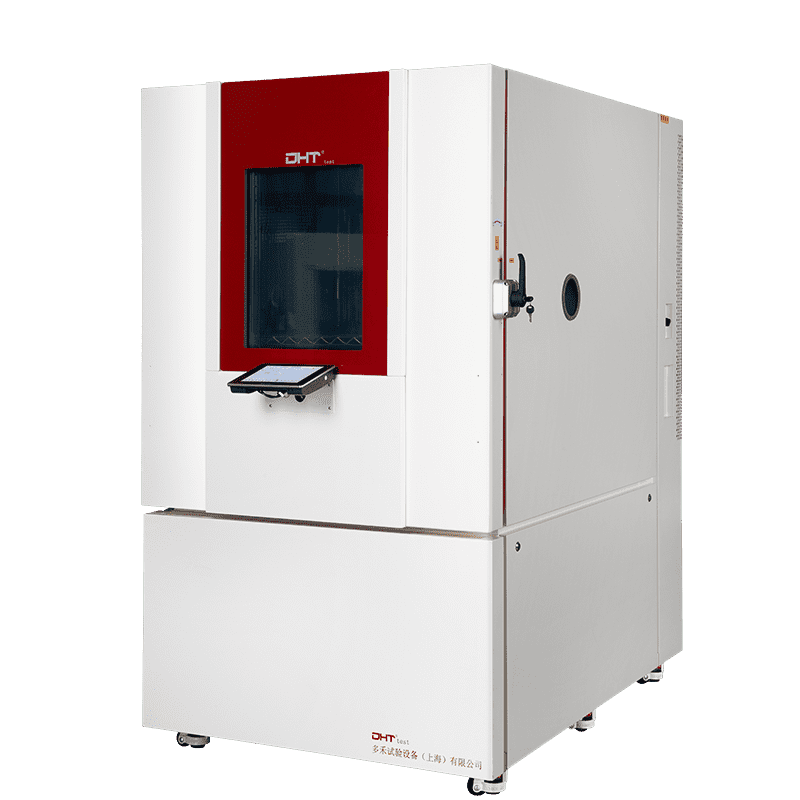Written by Robin
Senior Engineer, Doaho Test (DHT®)
In today’s high-precision manufacturing and R&D environments, limited laboratory space has become a common constraint. Especially in sectors like semiconductors, new energy, biopharmaceuticals, and precision electronics, the traditional centralized lab model is rapidly giving way to a more distributed, modular, and compact layout. This transformation has prompted many organizations to rethink how environmental testing equipment is deployed. Among the emerging solutions, the benchtop humidity chamber stands out as a preferred option—offering compact form and reliable performance for diverse testing needs.
But does a smaller size mean compromised functionality? Do all benchtop humidity chambers on the market truly offer stable and accurate temperature and humidity control? For laboratories that face space limitations yet demand uncompromising test quality, how can one identify genuinely professional-grade equipment? This article breaks it down across four dimensions—performance, application scenarios, design challenges, and selection strategies—to help you fully understand the value of compact humidity chambers.

More Than Just “Fits on the Bench”: The True Value of Benchtop Humidity Chambers
Compared with traditional floor-standing models, the most obvious advantage of a benchtop humidity chamber is its space-saving design. However, focusing solely on footprint may cause users to overlook its technical capabilities—such as structural integrity, test stability, and environmental control precision.
A qualified benchtop humidity chamber must accomplish the following within a confined chamber volume:
-
Precise environmental control: Temperature deviation should be within ±0.5°C and humidity accuracy within ±2% RH.
-
Uniform test conditions: Even in a chamber smaller than 30L, temperature and humidity should be evenly distributed with no hot or cold spots.
-
Long-term operational reliability: The chamber must maintain consistent performance during extended high-temperature, high-humidity operation—sometimes lasting dozens or even hundreds of hours.
-
Compliance with international standards: Must meet testing protocols such as IEC 60068, MIL-STD, and GB/T 2423 for environmental reliability.
In essence, a truly professional benchtop humidity chamber must not only “fit the bench” but also deliver robust, high-precision testing performance.
Why Benchtop Models Are Gaining Popularity
The growing adoption of benchtop humidity chambers is not coincidental; it’s driven by several practical needs:
-
Flexible deployment for fragmented space: Building new, large-scale test centers is often costly and time-consuming. In contrast, multiple compact test modules can be distributed throughout existing R&D buildings, cleanrooms, or quality control areas—without structural renovations.
-
Isolated testing for specific sample sets: Many R&D projects involve frequent, small-sample tests. Using large chambers for such tasks is inefficient and energy-intensive. Benchtop chambers are better suited to these focused test requirements.
-
Accelerated product iterations: Rapid development cycles demand fast, responsive testing. Benchtop units, with their smaller thermal mass, enable faster heat-up/cool-down cycles—ideal for short-run, high-frequency validation.
Small Structure, Strong Performance: What to Look For
Selecting a truly capable benchtop humidity chamber means verifying its performance across several critical areas—not just checking its dimensions:
-
Temperature and humidity control performance:A high-quality chamber should offer a range of at least 5°C to +85°C and 20% to 98% RH. Precision, stability, and uniformity should be rigorously validated to ensure the chamber maintains accurate environmental conditions throughout the test cycle.
-
Thermal system design:Compact systems pose unique thermal challenges. Efficient compressor units, optimized airflow, and PID-controlled humidification are essential for responsive temperature/humidity changes without overshoot, lag, or drift.
-
Chamber space utilization and insulation:In chambers with 30L to 60L volumes, careful airflow design and insulation materials are necessary to maximize usable space and prevent thermal buildup or sensor error. Over-compression of components can cause heat concentration or inaccurate readings.
-
Usability and data functionality:Modern benchtop units typically include 7-inch or larger touchscreens, multilingual interfaces, real-time parameter logging, and USB/Ethernet connectivity. These features enhance usability and make it easier to track, export, and integrate test data into broader platforms.
Key Industries That Rely on Compact Humidity Chambers
Although suitable for many industries, the following sectors show particularly high demand for benchtop humidity chambers:
-
Semiconductors and IC Design: Required for accelerated aging tests under controlled humidity during PCB, chip, or connector failure analysis.
-
Biopharmaceuticals and drug R&D: Used to simulate packaging integrity, sample stability, and cold chain performance.
-
New energy technology: Validating durability of miniature battery packs or sensors under hot and humid stress conditions.
-
Universities and research labs: Supporting on-site, fast-turnaround environmental tests for coursework, design projects, and experimental classes.
-
Display and optoelectronics: Testing optical stability of OLEDs, LCDs, and other sensitive components in moisture-prone environments.
How to Identify Truly Reliable Benchtop Chambers
试验箱-3-300x300.png.webp)
Many so-called “benchtop” chambers on the market are merely downsized versions of floor-standing models—not optimized for compact environments. To select a dependable chamber, consider the following:
-
Request actual test performance data: Don’t rely on promotional specs alone—ask for real-world performance curves and deviation analysis under extreme temperature and humidity.
-
Check if the design is tailored for compact use: Confirm that core components like compressors, sensors, and humidifiers are purpose-built for small chambers, not reused from larger systems.
-
Verify operational stability: Ensure the unit performs reliably without temperature drift, sensor error, or electrical overheating over long test durations.
-
Evaluate manufacturer expertise: Choose a provider with a strong track record in environmental test equipment development—especially for compact systems. A knowledgeable supplier will offer better product maturity, technical support, and spare part assurance.
-
Prefer models with remote monitoring and data export: Ideal for organizations that need cloud integration, long-term data tracking, or offsite test supervision.
Final Thoughts: Compact Size, Big Impact
In today’s fast-paced development cycles and space-constrained labs, the benchtop humidity chamber is no longer a compromise—it’s a strategic solution. These compact systems empower organizations to bring critical environmental testing in-house, reduce outsourcing costs and time delays, and maintain agile, high-efficiency testing workflows.
If you’re looking for a high-performance humidity chamber that’s compact yet fully capable of meeting demanding lab standards, a well-designed benchtop model may be the key to unlocking your next level of testing productivity. For tailored recommendations or to explore benchtop systems that comply with your specific test protocols, feel free to reach out to our technical team for expert consultation and support.
People also ask
What Is a Benchtop Constant Humidity Test Chamber—and Where Does It Fit Best?
A benchtop constant humidity test chamber is a compact environmental testing solution designed specifically for space-constrained laboratories. Despite its small footprint, it offers advanced temperature and humidity control, making it ideal for industries such as semiconductors, biopharmaceuticals, new energy, and precision electronics. It supports high-accuracy environmental stress screening in rapid R&D, quality inspection, and small-batch validation—helping users achieve high testing efficiency even in limited lab spaces.
What Are the Key Performance Metrics of a Benchtop Constant Humidity Chamber?
A high-quality benchtop humidity chamber should deliver precise environmental control—typically ±0.5°C temperature fluctuation and ±2% RH humidity fluctuation. Other critical factors include uniform temperature and humidity distribution, long-term operational stability, and compliance with international standards such as IEC 60068, MIL-STD, and GB/T 2423. Additional value comes from a responsive thermal system design, efficient insulation, intuitive user interface, and built-in data logging and export functions.
How to Choose a Truly Reliable Benchtop Constant Humidity Test Chamber?
Selecting a dependable chamber requires a thorough evaluation beyond promotional specs. Look for verified performance data, confirm whether it’s purpose-built for compact environments, and ensure consistent long-term reliability. Also assess the manufacturer’s industry expertise and after-sales support. Chambers with remote monitoring, data export capabilities, and modular design features typically offer greater flexibility and value for advanced lab environments.


